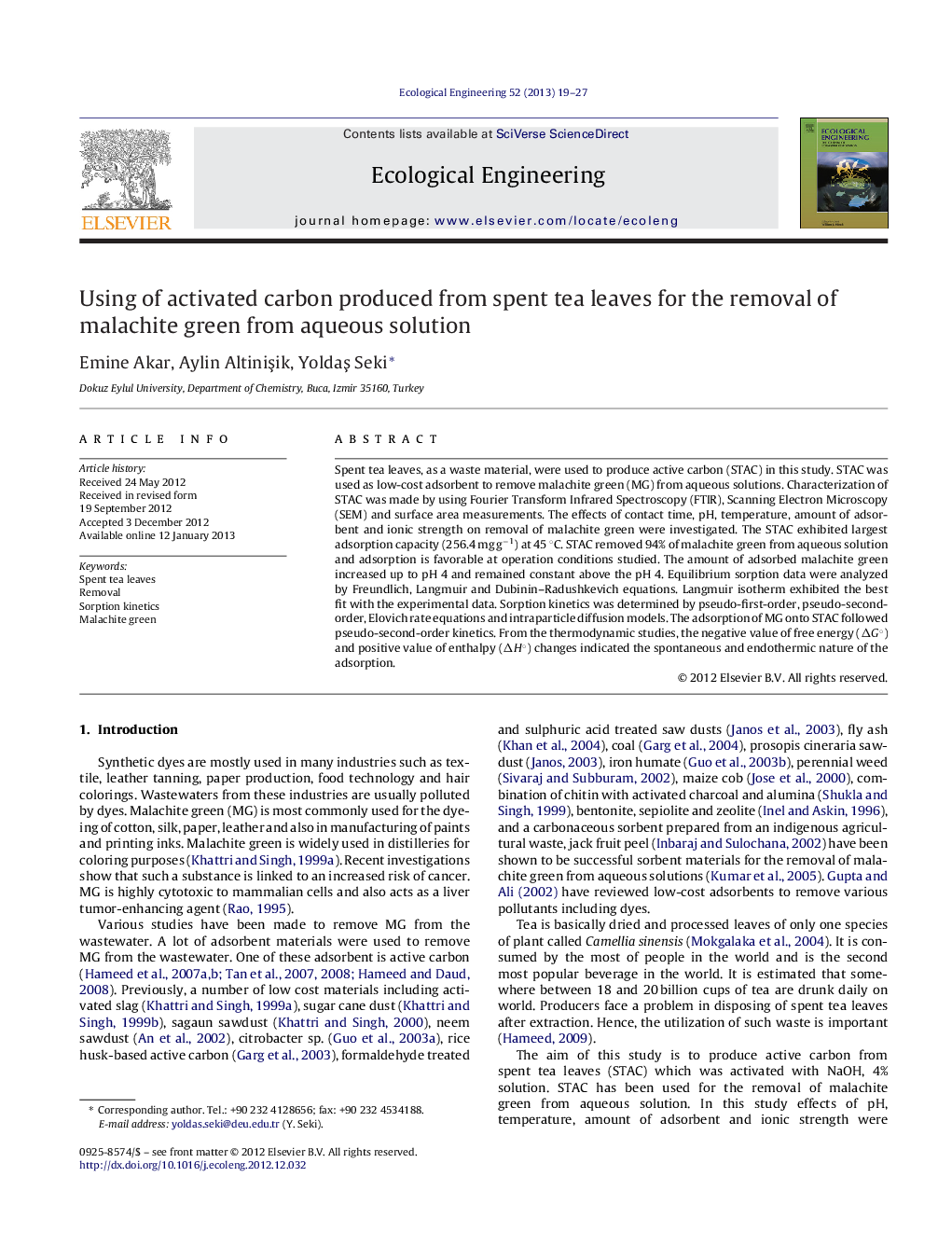| Article ID | Journal | Published Year | Pages | File Type |
|---|---|---|---|---|
| 4389732 | Ecological Engineering | 2013 | 9 Pages |
Spent tea leaves, as a waste material, were used to produce active carbon (STAC) in this study. STAC was used as low-cost adsorbent to remove malachite green (MG) from aqueous solutions. Characterization of STAC was made by using Fourier Transform Infrared Spectroscopy (FTIR), Scanning Electron Microscopy (SEM) and surface area measurements. The effects of contact time, pH, temperature, amount of adsorbent and ionic strength on removal of malachite green were investigated. The STAC exhibited largest adsorption capacity (256.4 mg g−1) at 45 °C. STAC removed 94% of malachite green from aqueous solution and adsorption is favorable at operation conditions studied. The amount of adsorbed malachite green increased up to pH 4 and remained constant above the pH 4. Equilibrium sorption data were analyzed by Freundlich, Langmuir and Dubinin–Radushkevich equations. Langmuir isotherm exhibited the best fit with the experimental data. Sorption kinetics was determined by pseudo-first-order, pseudo-second-order, Elovich rate equations and intraparticle diffusion models. The adsorption of MG onto STAC followed pseudo-second-order kinetics. From the thermodynamic studies, the negative value of free energy (ΔG°) and positive value of enthalpy (ΔH°) changes indicated the spontaneous and endothermic nature of the adsorption.
Graphical abstractFigure optionsDownload full-size imageDownload as PowerPoint slide
